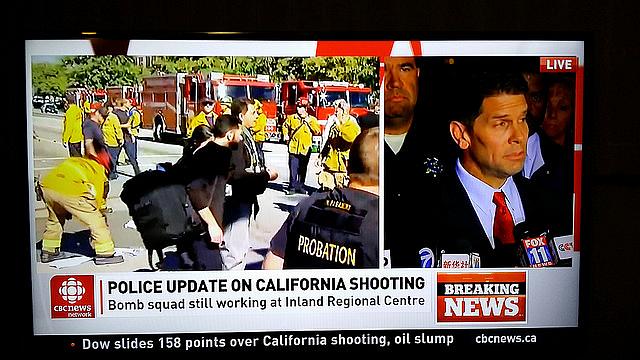After the San Bernardino terror attacks, how does city and its residents heal?

Months after ISIS-inspired terror hit San Bernardino, daily life has regained a sense of normalcy. The ever-present droning whirr of helicopters is gone. Streets near the Inland Regional Center, the scene of the attack, and the Center itself have reopened. The townhouse in the neighboring community of Redlands where the married shooters lived has been repaired and is on the market. The outward signs of the event that brought President Obama to the Inland Empire to again console victims of gun violence have faded. However, the longer lasting impacts of the tragedy — the effect it has on the psyche of the region and communities within it — is still taking shape in the weeks and months after the December 2nd attack.
As a San Bernardino native, I felt compelled to explore the lasting ramifications this tragic event would have on members of the community. Even now, it feels surreal thinking about it. I’m sure members of communities that have been victimized by terror or mass shootings all feel the sense that it truly can “happen anywhere.” If you had described the events of December 2 to me the day before — if you’d told me three dozen people would be killed or injured, that the world’s eyes would focus on San Bernardino, and that Air Force One would land at the former Norton Air Force Base to deliver a president who already had consoled too many victims of senseless violence — I would’ve thought it impossible. But here we are in a world where it’s no longer major metropolitan hubs like Los Angeles, New York, or Washington, D.C. under threat of terrorism but places like Roseburg, Oregon or Newtown, Connecticut. While cities both big and small now find themselves in the crosshairs, an undeterred resilience has appeared almost immediately; days after the attack in San Bernardino, the city and others in the region went forward with large, public holiday festivities despite the shadow of fear.
For my 2016 California Fellowship through the Center for Health Journalism, I will explore how the terror attack on San Bernardino has impacted mental health in a variety of communities across the inland region. The healing process will no doubt vary widely: First responders who arrived on the scene of an active shooting will have a very different path than the families of the developmentally disabled clients who rely on the Inland Regional Center to facilitate a host of care services. Parents have a hard enough time explaining violence when it happens far away, but what do they say to their children when it happens in their own backyard — when the vigils are in their own town? And what about the regional Muslim community? Many in the Islamic faith already feel they are under added scrutiny simply for being a member of their religion. Despite across the board condemnations from Islamic leaders around the world, in the wake of the San Bernardino attack, a mosque in the Coachella Valley was firebombed. Several reports about Muslim woman feeling stared at and isolated for wearing the hijab came out. How do Muslims in the Inland Empire cope with the tacit fear and mistrust projected on an entire community due to the evil and misguided actions of a few? San Bernardino, an already beleaguered and bankrupt city, now has to deal with yet another stain on its reputation. On a civic level, how can it move forward or somehow use the tragedy to propel itself not further down the path of hopelessness but toward some positive future for itself and its residents?
I fully admit that these are vast questions relating to issues that can’t and won’t be solved through my or any one journalist’s work. What I hope to achieve through my project is the beginning of a conversation that raises these questions and is able to evaluate one region’s road forward through a variety of perspectives. The shootout with the gunmen presented a situation where the increasing militarization of local police forces could be seen as a good thing. In this case, how do officers balance the mental strain of acting as warriors rather than guardians? What are the long-term psychological issues Muslims face when they feel they’re always under suspicion? Other communities in the last several years have dealt with painful tragedies; what have they learned and can they offer San Bernardino in the way of advice? This project, by its very nature, is open-ended. It’s going to be a body of work I hope others build on to advance the discussion of mental health in an increasingly unstable world.
[Photo by Renegade98 via Flickr.]

